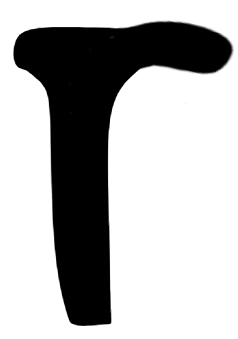Ghatotkacha (Gupta Ruler) on:
[Wikipedia]
[Google]
[Amazon]
Ghatotkacha ( Gupta script: 


 ''Gha-to-tka-cha'', IAST: Ghaṭotkaca, r. c. late 3rd century - early 4th century) was a pre-imperial Gupta king of northern India. He was a son of the dynasty's founder
''Gha-to-tka-cha'', IAST: Ghaṭotkaca, r. c. late 3rd century - early 4th century) was a pre-imperial Gupta king of northern India. He was a son of the dynasty's founder



 , "Great King") for Gupta and Ghatotkacha, as opposed to the title ''
, "Great King") for Gupta and Ghatotkacha, as opposed to the title ''


Gupta
Gupta () is a common surname or last name of Indian origin. It is based on the Sanskrit word गोप्तृ ''goptṛ'', which means 'guardian' or 'protector'. According to historian R. C. Majumdar, the surname ''Gupta'' was adopted by se ...
, and the father of the dynasty's first emperor Chandragupta I
Chandragupta I (Gupta script: ''Cha-ndra-gu-pta'', r. c. 319–335 or 319–350 CE) was a king of the Gupta Empire, who ruled in northern and central India. His title ''Maharajadhiraja'' ("great king of kings") suggests that he was the firs ...
.
Sources
Ghatotkacha was a son ofGupta
Gupta () is a common surname or last name of Indian origin. It is based on the Sanskrit word गोप्तृ ''goptṛ'', which means 'guardian' or 'protector'. According to historian R. C. Majumdar, the surname ''Gupta'' was adopted by se ...
, the founder of the Gupta dynasty. Like his father, Ghatotkacha is not attested by his own inscriptions. The earliest description of him occurs in his grandson Samudragupta's Allahabad Pillar inscription, and is repeated verbatim in several later records of the dynasty. Earlier scholars attributed a gold coin and a clay seal to him, but these are now unanimously assigned to Ghatotkacha-gupta, who was a son or a younger brother of the 5th century Gupta ruler Kumaragupta I
Kumaragupta I (Gupta script: ''Ku-ma-ra-gu-pta'', r. c. 415–455 CE) was an emperor of the Gupta Empire of Ancient India. A son of the Gupta emperor Chandragupta II and queen Dhruvadevi, he seems to have maintained control of his inherited te ...
.
Period
Modern historians date the beginning of the Gupta calendar era to 318-319 CE. This era probably marks the ascension of Chandragupta I to the Gupta throne, which means that Ghatotkacha's reign ended around this time. The beginning of his reign is uncertain. Various estimates of his reign include: * R. K. Mukherjee: 280-319 CE * A. S. Altekar: 290-305 CE * Tej Ram Sharma: 295-319 CE * V. A. Smith: 300-320 CE * Numismatist P. L. Gupta and historian S. R. Goyal: 300-319 CEPolitical status
The Allahabad Pillar inscription uses the title ''Maharaja
Mahārāja (; also spelled Maharajah, Maharaj) is a Sanskrit title for a "great ruler", "great king" or " high king".
A few ruled states informally called empires, including ruler raja Sri Gupta, founder of the ancient Indian Gupta Empire, a ...
'' (

Maharajadhiraja
Mahārāja (; also spelled Maharajah, Maharaj) is a Sanskrit title for a "great ruler", "great king" or " high king".
A few ruled states informally called empires, including ruler raja Sri Gupta, founder of the ancient Indian Gupta Empire, a ...
'' ("king of great kings") for Ghatotkacha's son Chandragupta I
Chandragupta I (Gupta script: ''Cha-ndra-gu-pta'', r. c. 319–335 or 319–350 CE) was a king of the Gupta Empire, who ruled in northern and central India. His title ''Maharajadhiraja'' ("great king of kings") suggests that he was the firs ...
. In the later period, the title ''Maharaja'' was used by feudatory rulers, which has led to suggestions that Gupta and Ghatotkacha were feudatory kings. However, there are several instances of paramount sovereigns using the title ''Maharaja'', in both pre-Gupta and post-Gupta periods, so this cannot be said with certainty. That said, there is no doubt that Gupta and Ghatotkacha held a lower status and were less powerful than Chandragupta I.
Reign
Ghatotkacha may have been responsible for entering into a matrimonial alliance with the Lichchhavis, which resulted in the marriage of the Lichchhavi princess Kumaradevi to his sonChandragupta I
Chandragupta I (Gupta script: ''Cha-ndra-gu-pta'', r. c. 319–335 or 319–350 CE) was a king of the Gupta Empire, who ruled in northern and central India. His title ''Maharajadhiraja'' ("great king of kings") suggests that he was the firs ...
. Historian V. A. Smith dates this event to c. 308 CE. The Gupta inscriptions do not mention the paternal family of the dynasty's queens with the exception of Kumaradevi, which suggests that the Gupta family considered Kumaradevi's marriage to Chandragupta as an important event.
Historian H. C. Raychaudhuri theorized that some of the ''Mahabharata
The ''Mahābhārata'' ( ; sa, महाभारतम्, ', ) is one of the two major Sanskrit literature, Sanskrit Indian epic poetry, epics of ancient India in Hinduism, the other being the ''Ramayana, Rāmāyaṇa''. It narrates the s ...
'' stories describing the sins of the legendary character Ghatotkacha were omitted in the final redaction of the epic out of respect for the Gupta king Ghatotkacha.
References
Bibliography
* * * {{DEFAULTSORT:Ghatotkacha Gupta Empire 3rd-century Indian monarchs 4th-century Indian monarchs